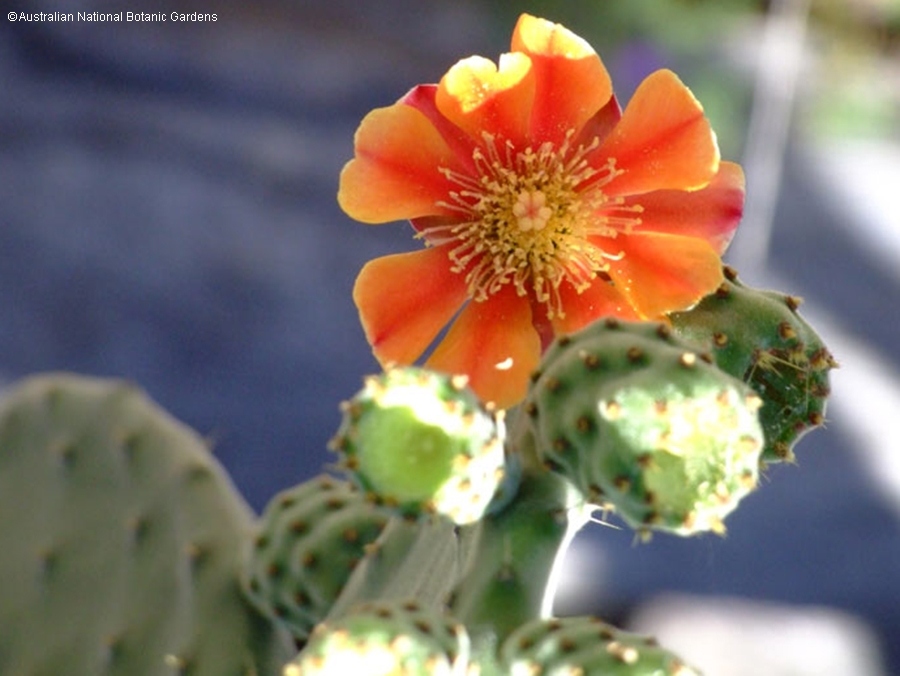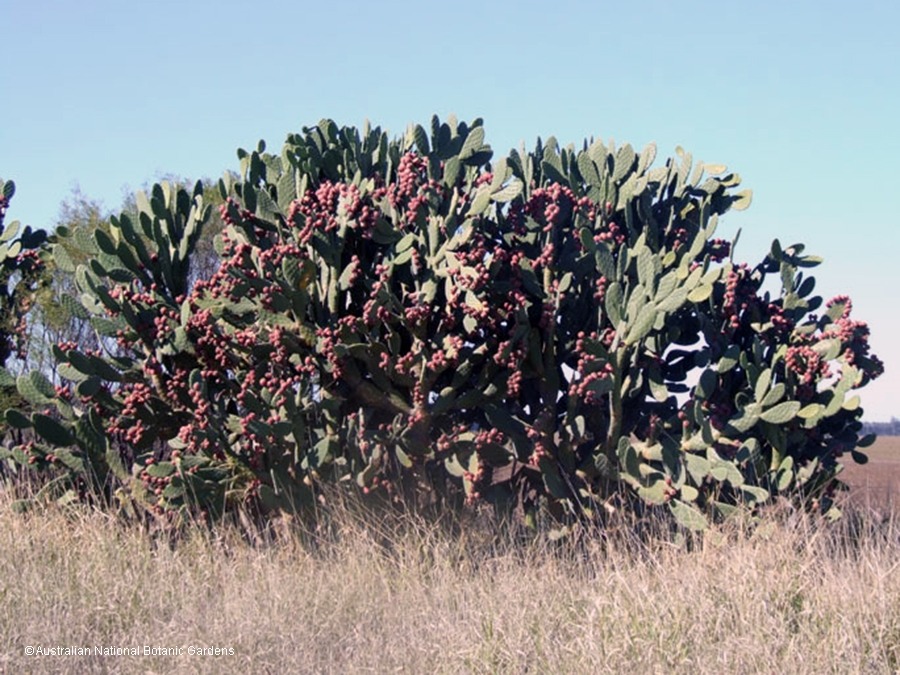Australian Tropical Rainforest Plants - Online edition
Opuntia tomentosa Salm-Dyck




Salm-Reifferscheid-Dyck, J.F.M.A.H.I.F. zu (1822), Observationes Botanicae in Horto Dickensi Notatae (3) Anno 1822: 8.
Velvet Tree Pear
Succulent shrub or small tree 2-6 m, sometimes reaching up to 8 m, with prominent trunk at base. Main branches fleshy, compressed and photosynthetic and bearing segments of green photosynthetically active flattened stems (cladodes). Segments oblong, elliptic or obovate, 15-35 cm long and 6-16 cm wide, grey-green, surfaces finely hairy (velvety). Segments are dotted with areoles (small raised structures) filled with fine yellow glochids (barbed bristles) 1-5 mm long. The stem segments are usually spineless, but may occasionally bear groups of one or two grey spines (3-25 mm long). These spines are more prominent on younger plants and tend to be absent from older stem segments.
Leaves are reduced to tiny cylindrical or cone-shaped structures, 4-6 mm long and are quickly shed from the developing stem segments. These leaves are also velvety. Leaves subtend areoles, usually one per areole. Stipules absent.
Flowers solitary and sessile on areoles along or close to margin of segments. Flowers bisexual, actinomorphic, 4-5 cm diam. Perianth consisting of many spreading tepals inserted near apex of hypanthium, outer tepals green and passing to orange, usually with reddish coloured markings on the undersides of the outermost petals, inner tepals petaloid, orange; more or less free. Stamens numerous, less than half as long as tepals. Ovary inferior 1-locular, style simple, stigma 5 or more lobed.
Fruits are a fleshy berry distributed on or close to margins of segments. Fruits similar to stem segments but generally smaller, more swollen in shape and purplish when mature. Fruits ellipsoid or obovoid in outline with a depressed apex, c. 3-5 cm long and 2.5-4 cm wide. Fruit surface finely hairy, with several areoles with glochids (barbed bristles). Seeds numerous, embedded in the reddish pulp in the centre of the fruit, sub-globular, 3-5 mm, yellow or pale brown in colour.
Seedlings not seen.
Occurs in CEQ. This species is widely distributed and common throughout the eastern parts of Australia and is also scattered throughout many other parts of the country. It is naturalised in a wide range of habitats including vine thickets. Native of Mexico.
This profile information and associated coding has been adapted from Telford (1984), Harden et al. (2014) and Environmental Weeds of Australia (Queensland Edition).





